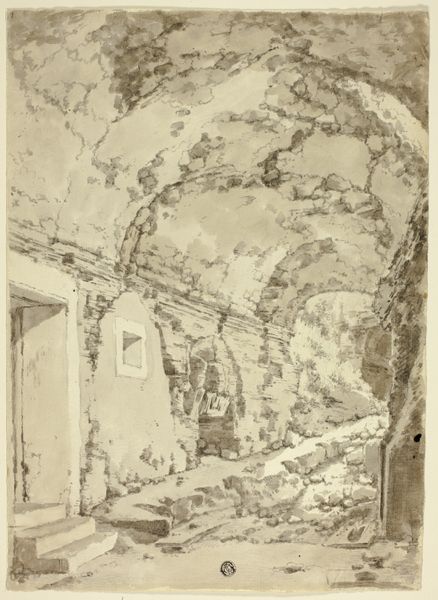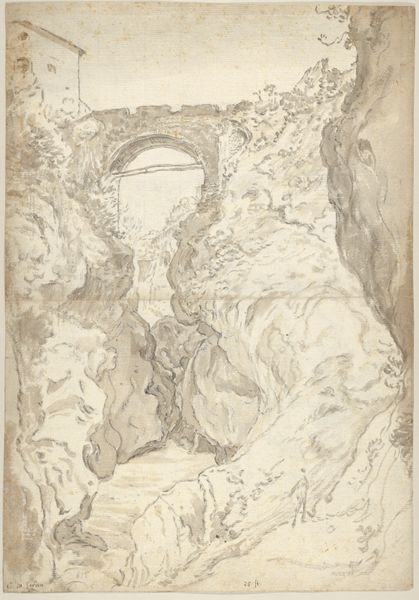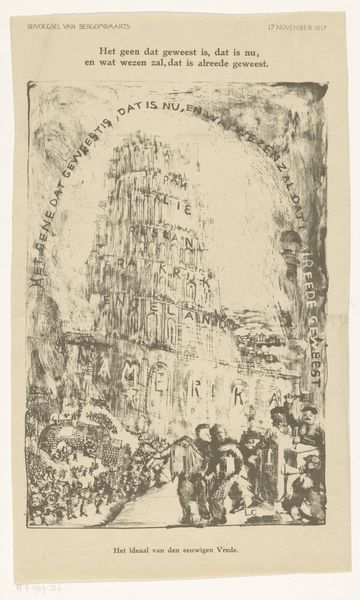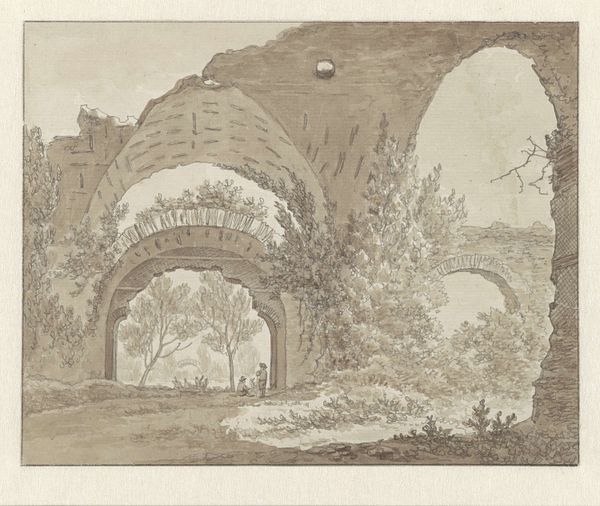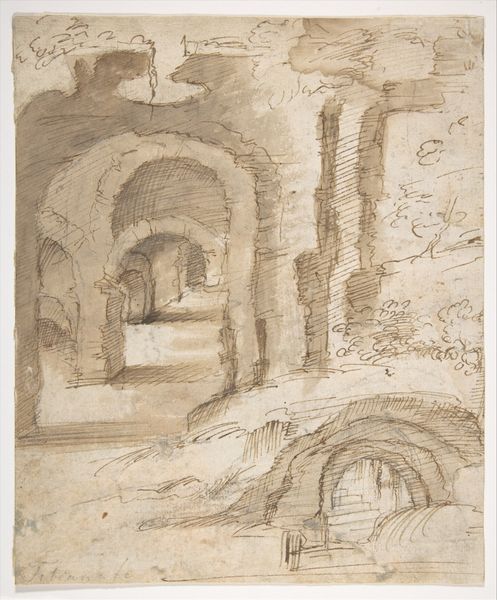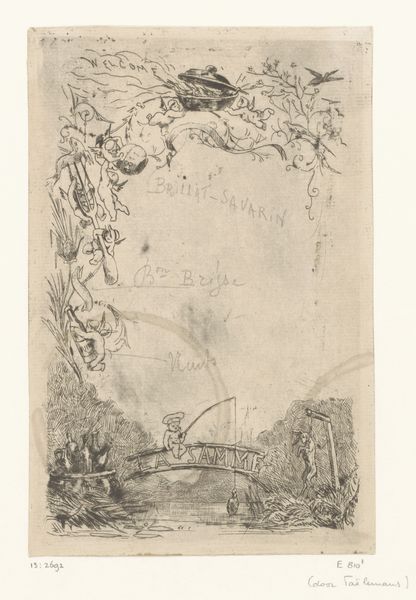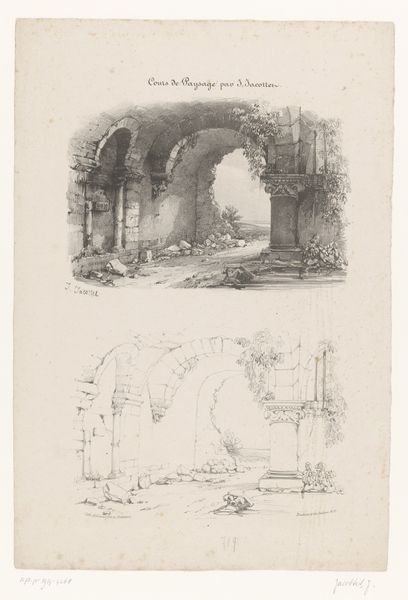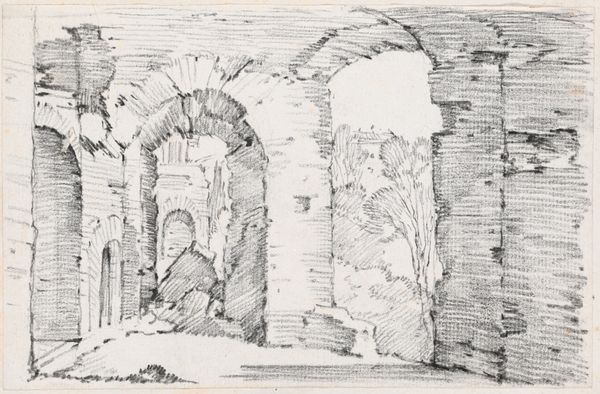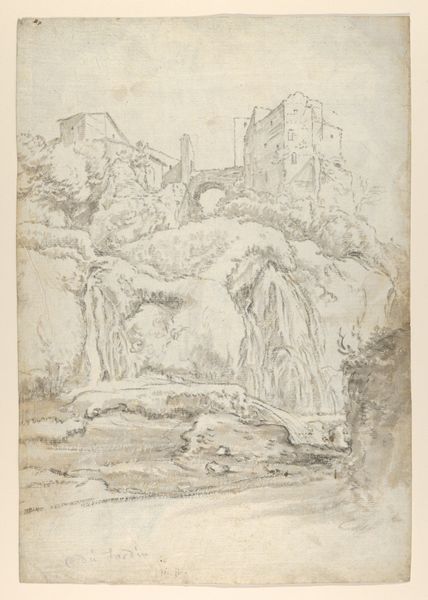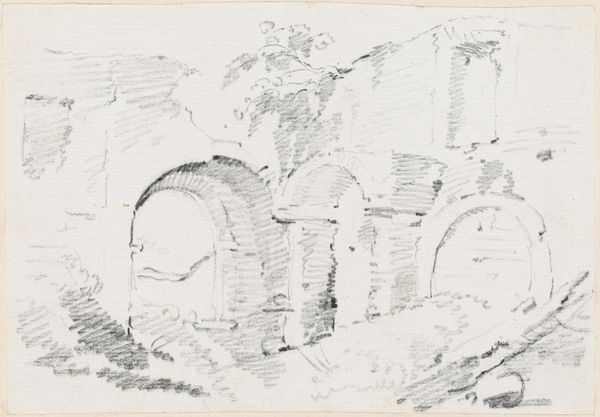
drawing, paper, graphite
#
drawing
#
landscape
#
paper
#
romanticism
#
graphite
#
realism
Dimensions: 148 × 123 mm
Copyright: Public Domain
Curator: Ah, there's something hauntingly beautiful about this… like a faded photograph. Editor: Indeed. What we have here is "Ruins of Archway," a graphite drawing on paper, circa 1827, by Richard Parkes Bonington. Currently residing at The Art Institute of Chicago. Curator: That title feels insufficient somehow. It suggests mere architecture, but the emotional weight feels so much deeper. It is an archway, sure, but the ruins pulse with absence and yearning. Editor: Structurally, the arch acts as a framing device. The foreground—rife with delicate, almost feverish graphite marks depicting dense vegetation—creates a dynamic tension with the static geometry of the arch itself. Notice how Bonington manipulates line weight. The arch's edges are firm, definable, compared to the blurry, ephemeral quality of the flora. This reinforces the sense of a decaying structure slowly being reclaimed by nature. Curator: Beautifully put. Reclaimed… or perhaps the ruins are themselves gestating, being reborn as foliage. The darkness within the arch hints at endless, unseen possibility. What secrets are those shadows hiding, or nurturing? And consider the Romanticism…this isn't a pristine monument, it's an organic collapse. Editor: Absolutely. And further, there's a dialectic at play here, the rational, man-made structure versus the wild, untamed elements. The arch's curve mirrors and is countered by the sinuous forms of the plants. Consider how the light filtering through illuminates patches within the foliage while casting others in deep shadow… it creates depth but also a subtle psychological unease. Curator: You know, I see the remnants of an almost whimsical touch—a certain delicacy in the drawing which contrasts strangely with the heaviness of the subject matter. Is it a celebration of decay or a mourning? It’s suspended in a melancholic uncertainty. I bet if you could walk through, you would just step into memory. Editor: A striking thought. In summary, the composition skillfully oscillates between clarity and ambiguity, between solidity and ephemerality. A romantic paradox that is very becoming in our current moment of reckoning with the human imprint. Curator: It speaks volumes. Even now.
Comments
No comments
Be the first to comment and join the conversation on the ultimate creative platform.
